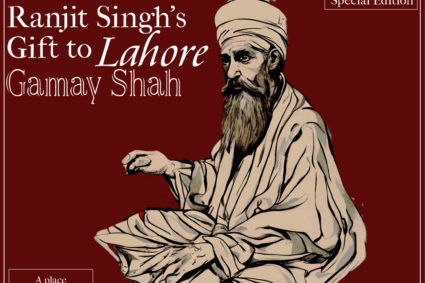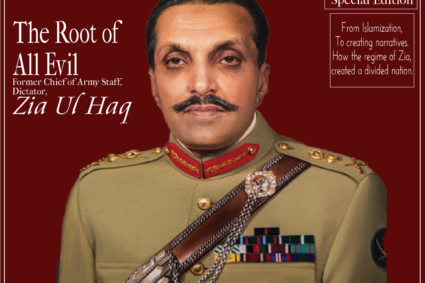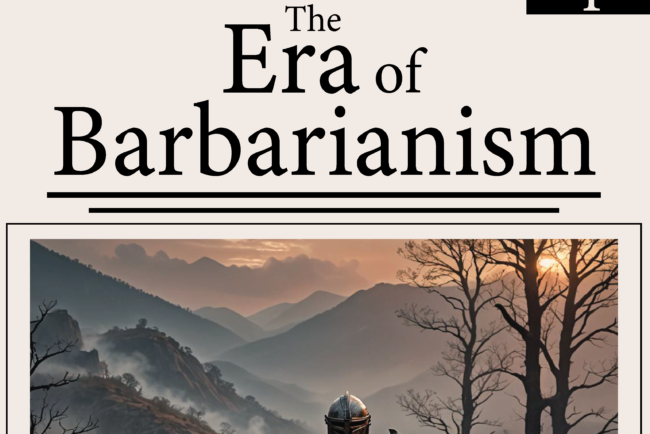
(A Curriculum of Champions & Emperors)
History is colored by some of the most magnificent personalities. These personalities had a certain core belief within themselves that shaped their destinies. They all had virtues and work ethics beyond comparison. These are the short excerpts of their youths of some of the iconic characters of the Sub-Continent, and an additional American hero Muhammad Ali(professional Boxer) for he shared some of those values too.
For those who wish to raise strong young men and women, these are the disciplines and curriculums for them.

Rani Laxmibai
Rani Laxmibai, or Manu as they called her in affection, was the daughter of a Brahmin Pandit, a courtier and subject of Baji Rao II. Baji Rao had no children of his own, but his adopted children from his cousins. They were of the same age as Laxmibai, so she was brought up amongst the male children of the palace.
Rani Laxmibai spent her childhood learning how to wrestle, read, write, shoot, wield all weapons, ride horses and elephants. She was a forthright woman even in adolescence. She was highly skilled in horsemanship, to the extent that she could recognize unseen features of a horse far better than most kings and emperors of her time. The British, too, were in awe of her looks, her ability to compete amongst the greatest wrestlers of the era, read, write, and use any weapon perfectly. Her upbringing was extremely different to those of her age group. However, her grit and belief in herself, whereby believing her fate had more to offer than others knew, proved her worth and later remembered as the Great Jhansi Ki Rani, Rani Laxmibai (The Queen of Jhansi, Queen Laxmibai)

Nur-Jahan
Few have ascertained the achievements of outshining their husbands, their foes, and their emperors. Mihr-un-Nisa, later to be known as Empress Nur Jahan, the wife of Jahangir, was known to achieve all these feats.
Her father, Ghiyas Beg and mother Asmat, both of Iranian origin, trained Nur-Jehan in similar dexterity, grit, and strength as their sons.
Although not promoted, women of Muslim origin rarely developed themselves in similar positions as men in Mughal times, although credit was given regardless of gender in those times for excellent work.
Nur-Jahan was trained similarly to Persian and Mughal princes. Some might even believe that an analysis can be drawn that Aurangzeb’s curriculum was heritage from Nur-Jahan’s training conducted by her parents.
Much credit is awarded to Nur’s parents for their tender and loving nature, passing etiquette and aristocratic virtues into their childen. However, it was Nur’s own motivation to become a hafiz(scholar) of the Islamic scriptures, the Quran and Hadith. Similarly, as mentioned above, she would dig deep into Persian poets and stories of Persian heroes in literature. Sheherzade of the Arabian Nights, Rostam & Sohrab of the Shanameh, the great characteristics of Gulbadan, mother of Akbar, all played a vital role in the dexterity and mental stimulus for Nur and her political strategies later in life.
Nur wasn’t singlulary constrained to literature, she sought to learn it herself. With the same grit and motivation, she saw her brothers gaining the military training to fit in into aristocratic circles. Thus, she herself observed and honed her skills over her lifetime. Her archery, horseback riding, development of war strategies, all were things she learned from her surroundings and poilical gossip she heard in the darbaar of her fathers havelli.
These skills made Nur Jahan the impressive Queen she was. She was trained in Persian and Hindu literature. She was well-read in Islamic law and history. She was equipped with skills of war and a bow and arrow, which she used to hunt a tiger to impress the Emperor Jahangir. The tiger was known to bully a village in the outskirts of Lahore, a tiger that met his fate from the great Empress Nur-Jahan.
Nur-Jahan lost her political battle at the end, but her virtues, skills, and curriculum for aristocratic teachings, is the one the Mughals adopted in history.

Aurangzeb
Aurangzeb Alamgir would become the Sixth Mughal Emperor of India. Both Jahangir (Aurangzeb’s grandfather) have similar upbringings, however, minor differences appear showcasing their difference in both rule and childhood. The greatest sentence that defines the Emperors is, “no young man should lay at home all day, they should either be on horseback or training”.
Aurangzeb was given a princely education. Although military training was necessary and a standard, his training in literature is of greater intrigue. Aurangzeb, like other Mughal princes, was to be well trained in Islamic literature, both Quran and Ahadith. He would then be trained in Turkish literature, learning the art of calligraphy along with his Islamic education. Adding to this is the imposition of studying Persian literature, a feat used by all great rulers of the East. Persian literature has been known to hone princes, especially from the great epics such as the Shahnameh. The writings of Saadi, Hafiz, and Rumi were stressed upon Aurangzeb, all of which he fondly enjoyed and studied. Farsi(Persian) literature assisted in the development of ethics, etiquette, and mannerisms, as well as justice, as core features of its teachings. Hindi aesthetics, writing, and religion, were also an important part of his princely education. Knowing that a massive portion of his constituency was Hindu, Aurangzeb was well versed in Mahabharata and the Ramayan. Other books that were sponsored by Akbar to be translated into Hindi, became a Mughal tradition to study.
Aurangzeb was awarded administrative and military positions at a very young age, allowing him to make important decisions and grow as a prominent military commander.
His training and upbringing, in arts, literature, languages, religion, and military training, allowed him to take the seat from his brothers at the time of succession, when Shah Jahan was close to death. His bravery, although hereditary, gave him the push to become a great administrator and Emperor. Ya takht ya tabut – Either the throne or the grave. A do or die Mughal Tradition. The question arises that other princes were trained equally, then this may not be a fair standard. When in actuality, Dara Shikoh remained at the palace with little to no responsibilities, only expansion in philosophical thought, a master of one. Aurangzeb, the jack of all trades, became Alamgir, hence why history remembers him as the Emperor and the others died as princes.

Tamerlane(Timurlung)
Born Temur, meaning “iron”, on the 9th of April 1336, was raised in harsh winters in a similar culture to Mongolian Steppes in the Northern Regions of Uzbekistan. Temur’s accounts have been written by an absolute Anti-Timurid Arabsha, and certain Western Ambassadors at the time.
The accounts for his youth consist of two activities,
a motto, and faith.
The two activities that were bestowed upon youths of these regions were simple standards across the board. All had to learn to hunt, to ride well on horseback, a culture bestowed by the Golden Horde of Genghis Khan. Temur persevered in harsh conditions and winters, creating his own weapons and tools for hunts. Additionally, he rode back and forth in deep snow on horseback at full gallop, constantly trying to improve his horsemanship, in his mind to match the skills or outdo the skills of the Golden Horde. Temur was injured in his early youth, in an ambush, leaving him lame in his right leg and losing a finger on his right hand, falling from horseback.
Temurlung – (Timur the Lame or Tamerlane)- was not affected by this disadvantage. He believed in his motto, the words of his grandmother, that one of her descendants would one day be lord of these lands with his own subjects, and one element that made him King, the immovable belief in himself. Temur believed in his destiny to the extent, that he knew he would one day be the most powerful of them all. Temur was filled with faith, both in God and in himself. He believed, deeply and truly, that God had chosen him for greatness. Thus, he went on to prove it on the battlefield, ruining the Ottoman generals, fearing the Horde away, and becoming the Sword of Islam, Temur-Lung.

Ruttie Jinnah (Rutten Bai)
The woman our dearest Mohammed Ali Jinnah loved the most. The woman who made Jinnah expose emotions to the public for the first time when he fell to his knees and wept at the loss of his beloved wife.
Ruttie Petit, Ratten Bai, or Ruttie Jinnah, was one of the most prominent women of Indian socialites and political spheres years before she would see her beloved Jinnah accomplish the story of Pakistan into a reality.
Ruttie’s childhood was filled with the most charming of elements. She was loved with almost full affection, full attention, and exceptional time devoted to her by both her parents. Her Aunt, a philanthropist, would take Ruttie along in her youthful years to learn of charity and the suffering of others. Ruttie grew empathetic.
Ruttie was an idealist, a woman madly in love with Keats, Byron, and Shelly. English Literature, novels of love, and finding what’s lost, are all topics that curated the ideology of the idealistic Ruttie Jinnah. Her father’s attention to her inculcated the idea of nationalism in her for the people of India.
Ruttie’s affection with immense literature, discipline in dressing, the ability to learn, listen, and converse, gave her the attributes of one the most beautiful, elegant, well-dressed, and most mature girls among her peers and social status, at 11. It was no surprise that Jinnah fell for this lovely woman when she was only 16. He had not seen a brighter mind amongst women as hers. For context, Jinnah was a man who had spent his life in the upper echelons of Britain and India at that time, he was no less exposed to the wonders of the world. Yet, it was Ruttie Petit who stole his heart. Her love for national affairs, empathy, idealism, and affection for the romantics, created the purest soul known to India, Ruttie Jinnah.
It was this very cultural growth within her that led her to become a strong woman, sticking to her culture and roots, never bowing before the British. These were the virtues that she later passed to her daughter Dina, who shared it to this day, with a strong and moral family of the Wadia.
Ruttie met an unfortunate end, but her virtue, extent of education, ability to learn, and immense love of the culture of others and self, made her the powerful woman she is remembered as. As today is the death of her husband, we remember her with the same passion as she remembered Jinnah on her deathbed.

Muhammad Ali (Professional Boxer)
Born Cassius Clay, later Muhammad Ali, the world champion has a straightforward story of his youth and early days. One we are all aware of. Some are hidden in the biographies written on him that many may miss.
Muhammad Ali was driven by two principles, the call to greatness, & vengeance. Prior to joining the gym, Ali talked about having a loving family, regardless of their imperfections, and how there was love and care for all children, a virtue he later passed on to his children. Ali grew up in the era of hatred, the 50s and 60s of America where Black Folk faced ruthlessness. The one thing that made him most upset, was that there weren’t any Black Superheroes, no role models for the Black Community.
Ali was driven by belief. His faith in God, in a larger being than himself, and in his destiny. In his book “The Soul of A Butterfly”, Ali remembers being a young 9-year-old, sitting on the window asking God for his purpose, for he knew he was built for something grand. The theft of his bike took him to his destiny. The policeman he sought to file a report to, was the gym owner, who later trained Muhammad Ali. It wasn’t just the unique training Ali had, it was his devotion. “First to the gym, last to leave”, hard work was written on the steps of destiny, and Ali raced up.
His greatness is known to us all, as a Champion, a Hero, a Role Model, and truly a voice of the voiceless. You are the greatest, Muhammad Ali.
Concluding Thoughts
Many who read this will assume some bias in choice of characters, or the limited numbers of characters. In reality, this is only an excerpt of a study underway by this organization.
Another notion to consider, some may believe these are works promoting Islamic trainings, or “Pro-Persian” or “Anti-Hindu” lectures. In reality, we are to learn from these characters exactly the opposite.
All these characters weren’t masters of one, but rather “Jack of All Trades”. These champions, heroes, and Emperors, all understood the wealth of wisdom in reading and writing, whilst similarly being active in their work.
Many believe the Mughals to be an extravagant and nonchalant breed of emperors. When in actuality they, as well as Persian instructors, believed that one should complete all their tasks, and should not be laying around idle at home or doing menial tasks. They should do tasks of grandeur, tasks that hone skills and require responsibility and discipline.
The sad reality is, that with only these characters a great curriculum and thought process can be awarded to the youths of our cultures, yet we ignore them for modernized education(a topic to be discussed in Edition Six of the Asadgarh Chronicle).
These are the virtues, beliefs, and extreme faith, that all these men and women had in themselves, to then become the greats they became. Teach your kin the virtues and wisdom of these greats from the same literature that is now even more easily available to you. Then, too, greatness will follow.
Bibliography:
(All elements of this article were studied and learned from the following books)
Audrey Truschke – Aurangzeb: The Man and The Myth
Justin Marozzi – Tamerlane: Sword of Islam, Conqueror of the World
Muhammad Ali with Hana Yasmeen Ali – The Soul of a Butterfly
Pratibha Ranade (translation-Sanjay Ranade) – Rani Laxmibai: Warrior Queen of Jhansi
Ruby Lal – Empress: The Astonishing Reign of Nur Jahan
Shugufta Yasmeen – Ruttie-Jinnah: Life and Love
Disclaimer – All rights to the images are not owned by The Asadgarh Chronicle. These images are rightfully owned by their publishers and are not being used for monetary benefit here.



















